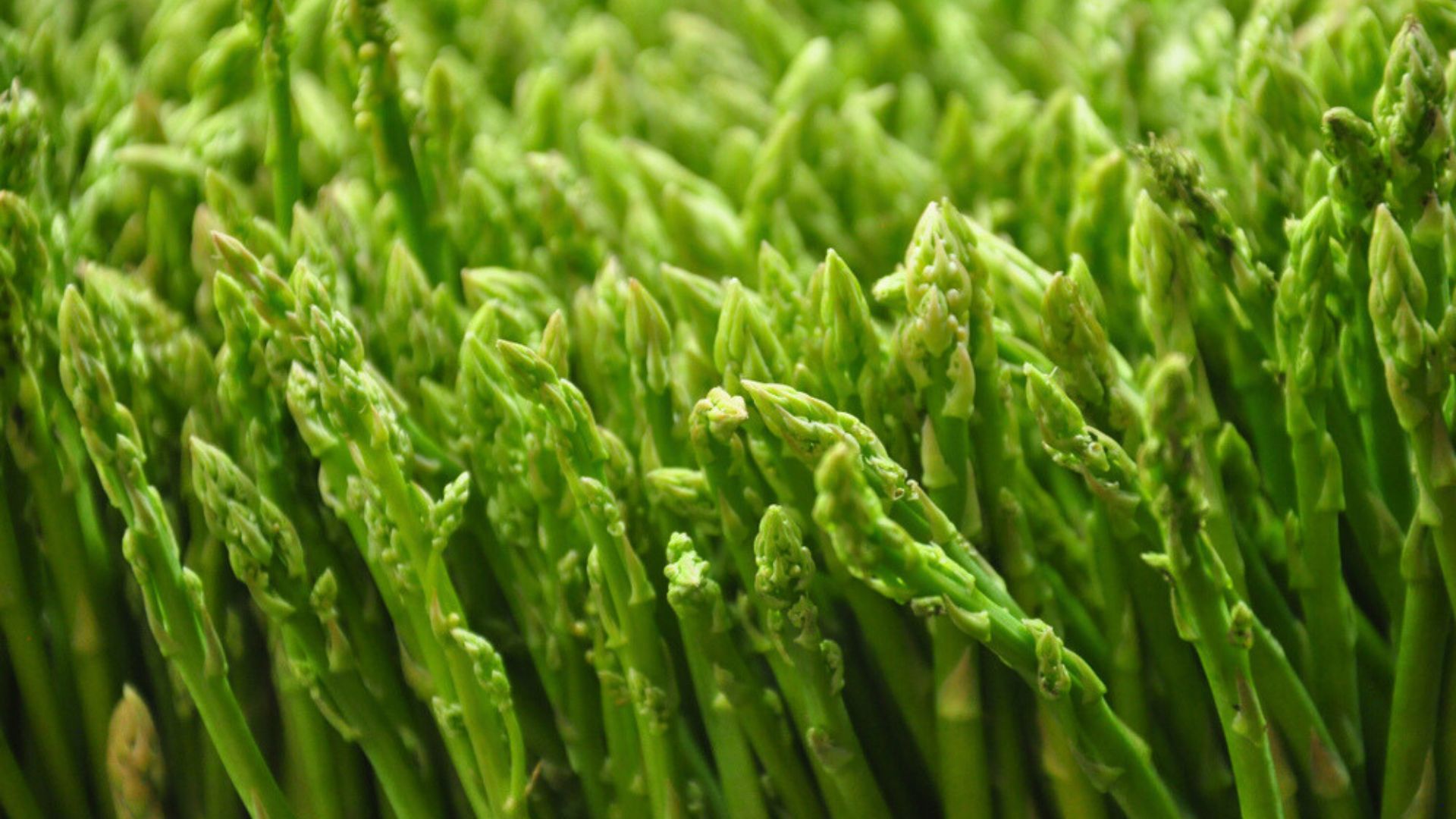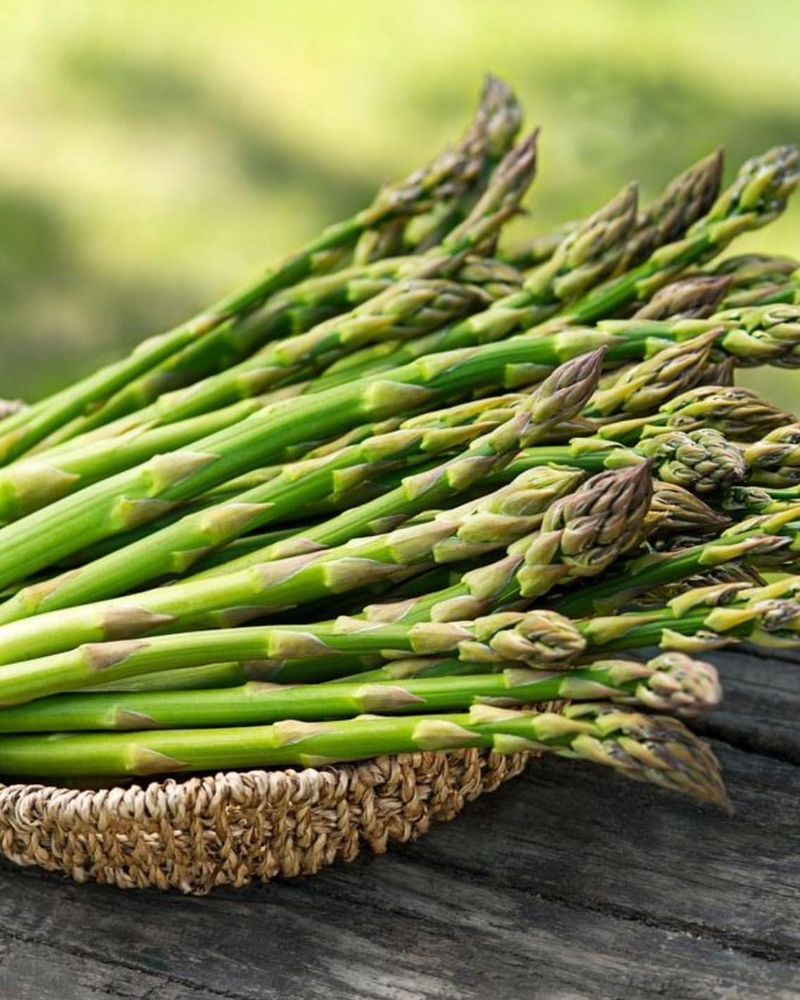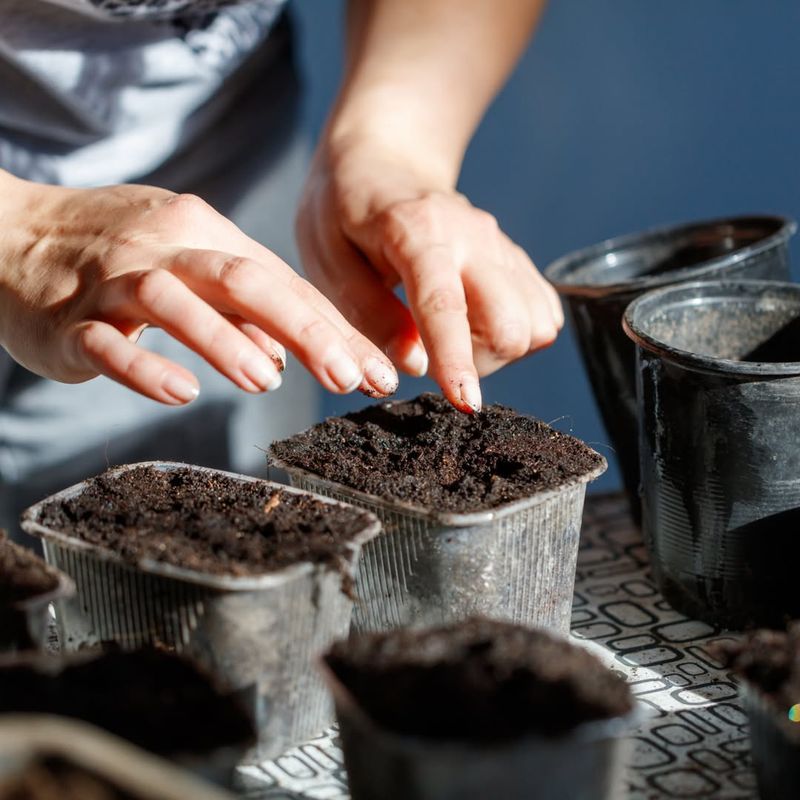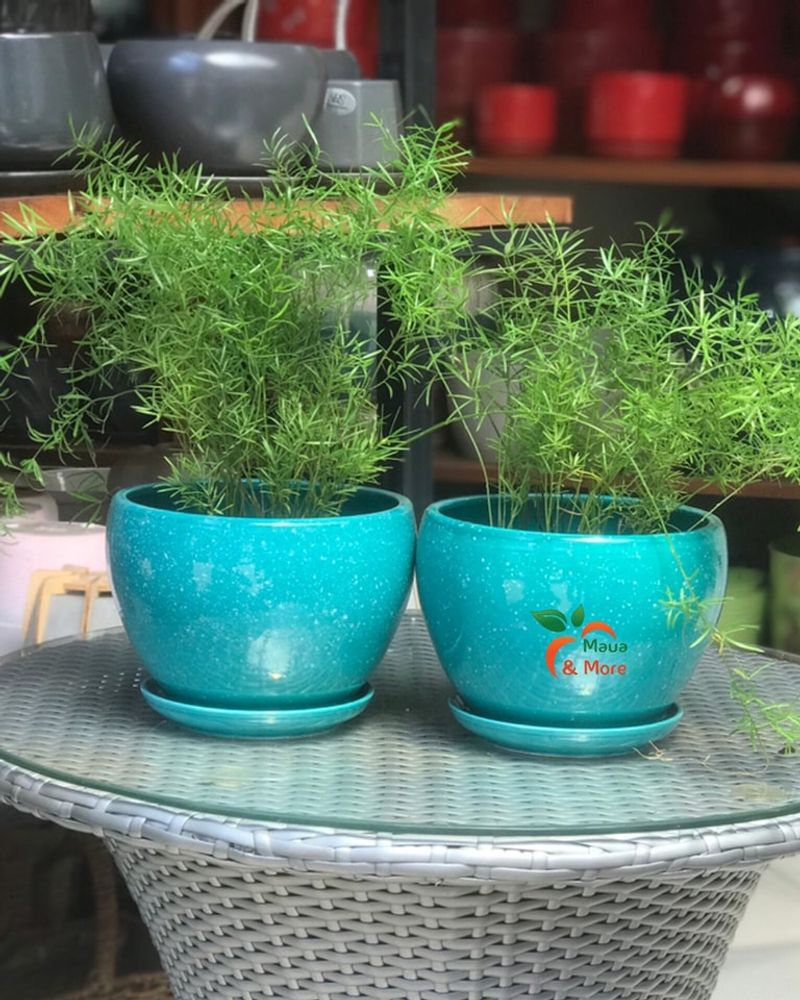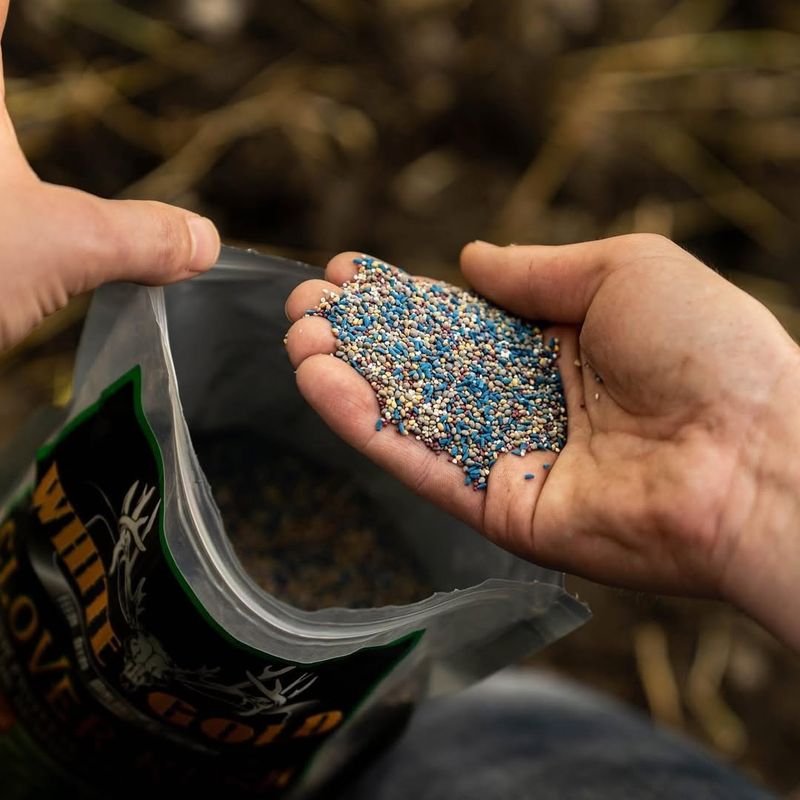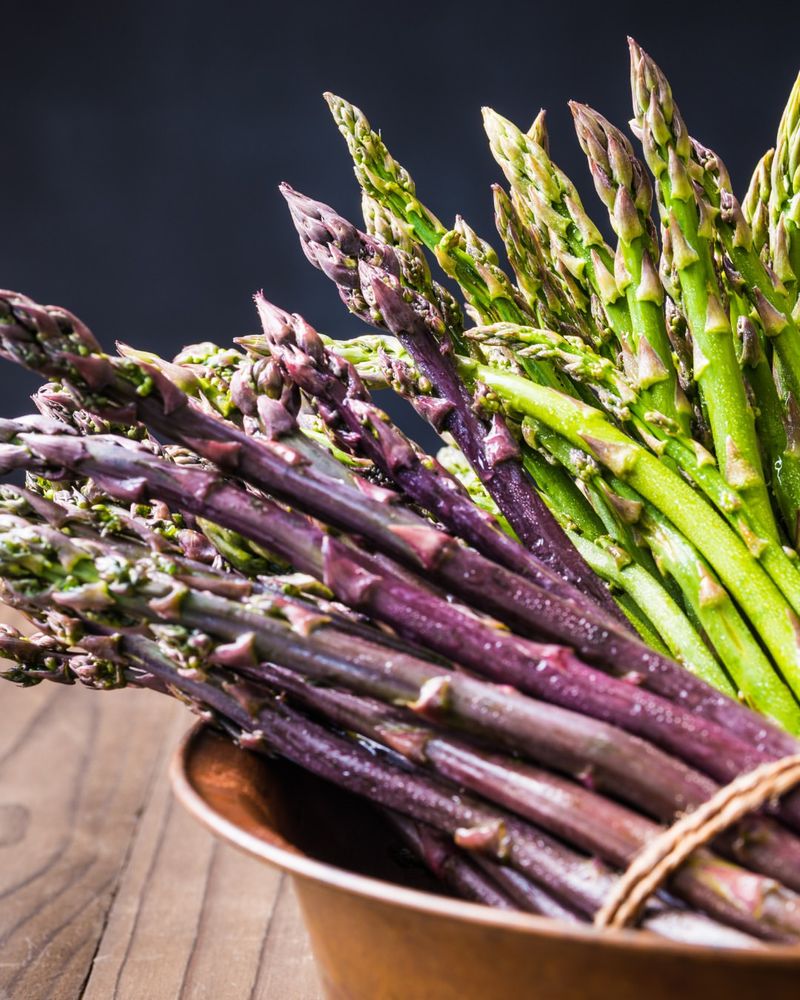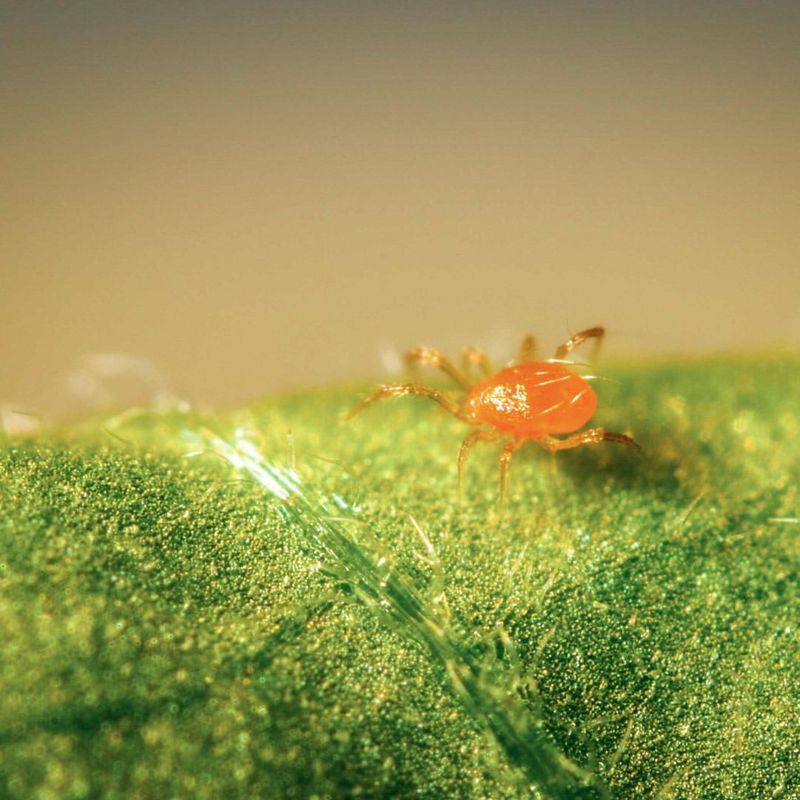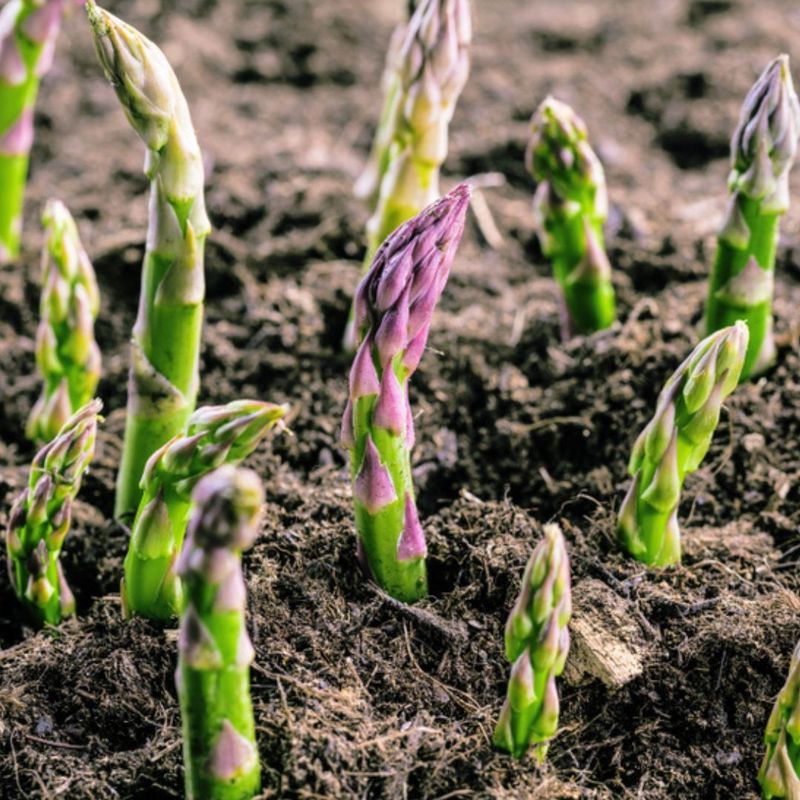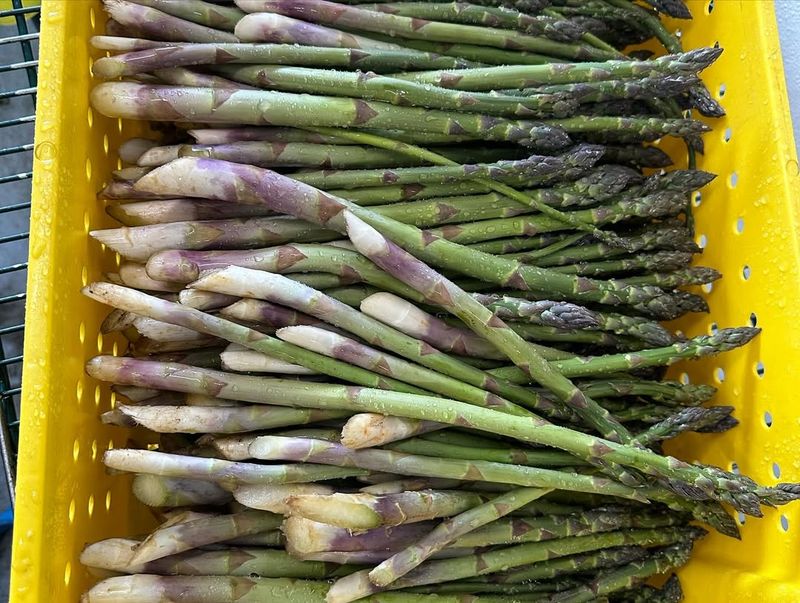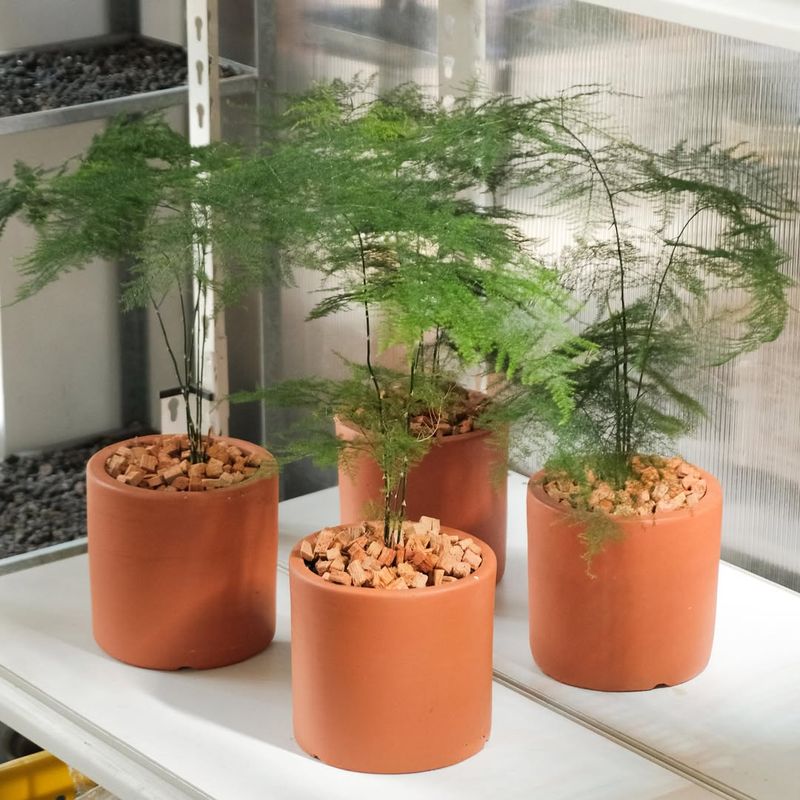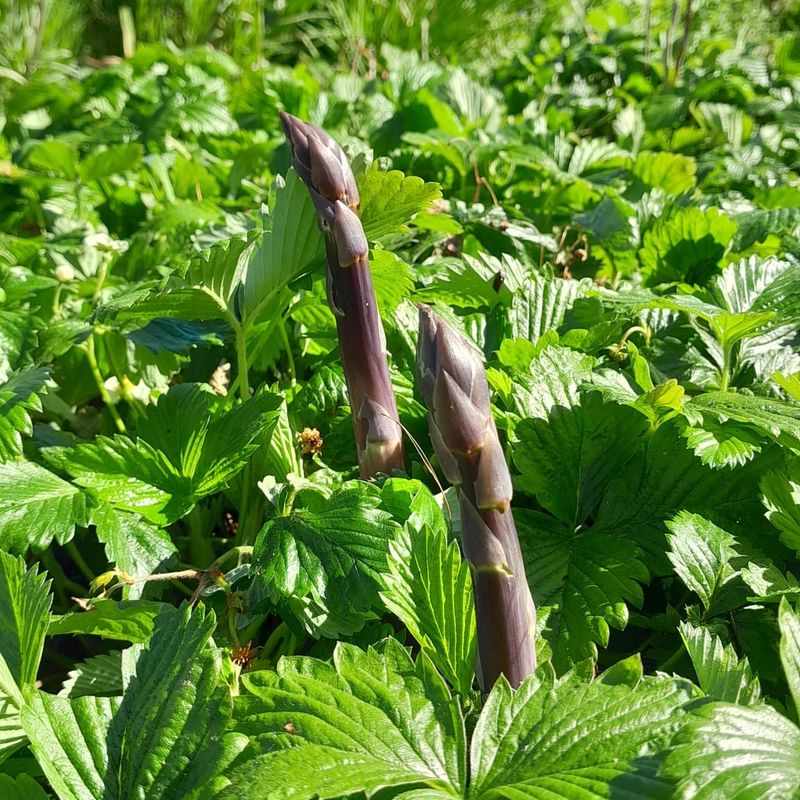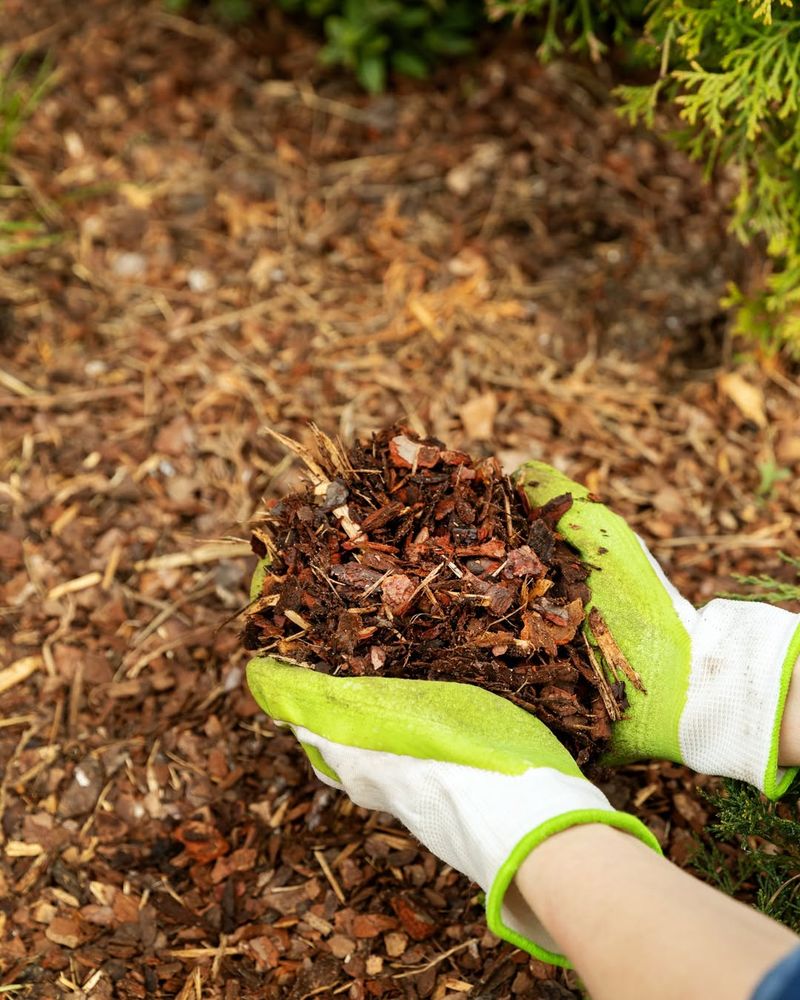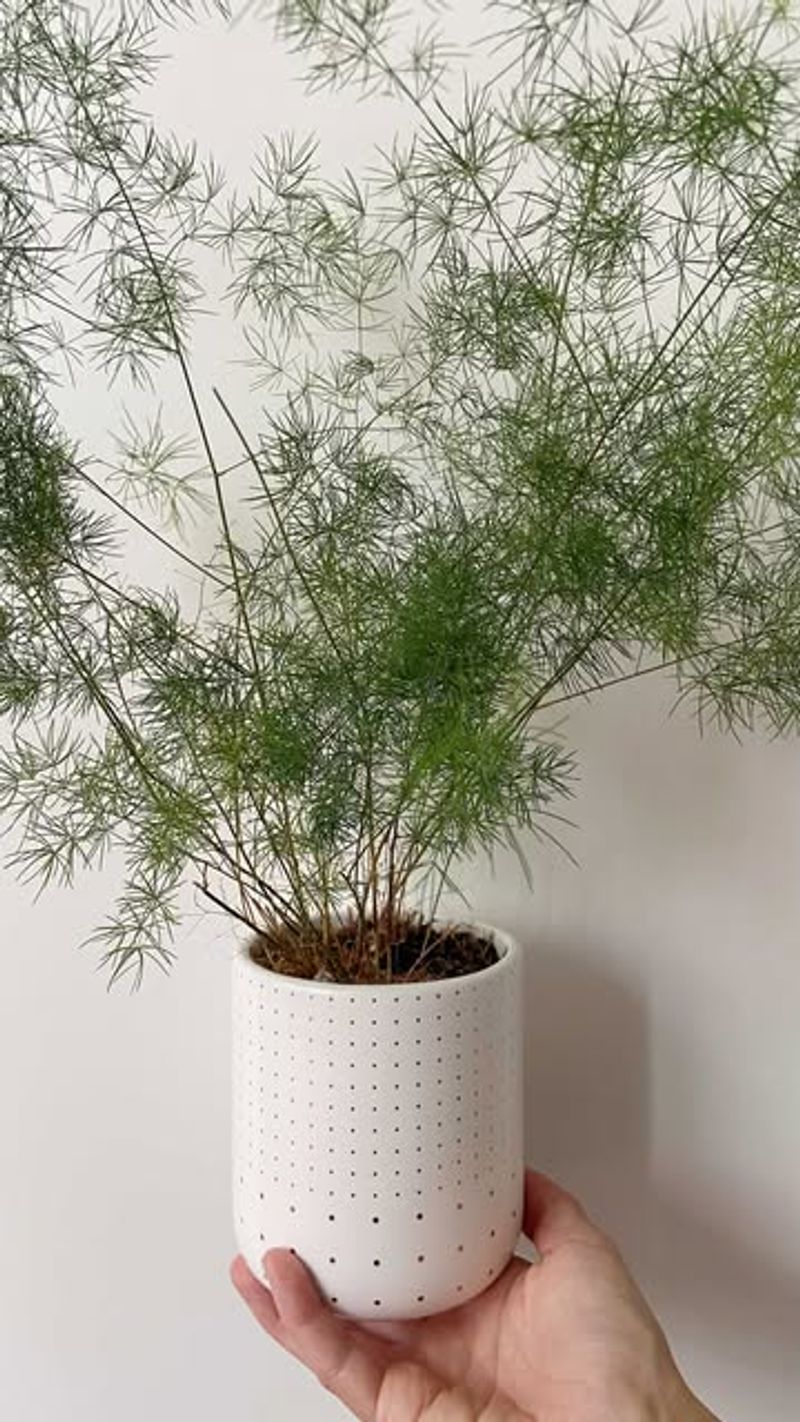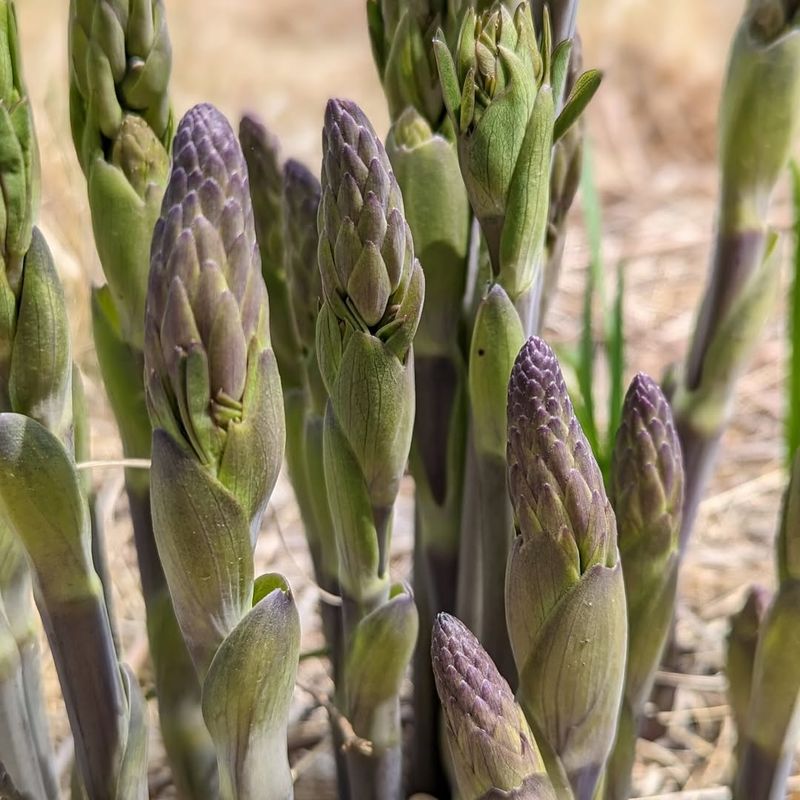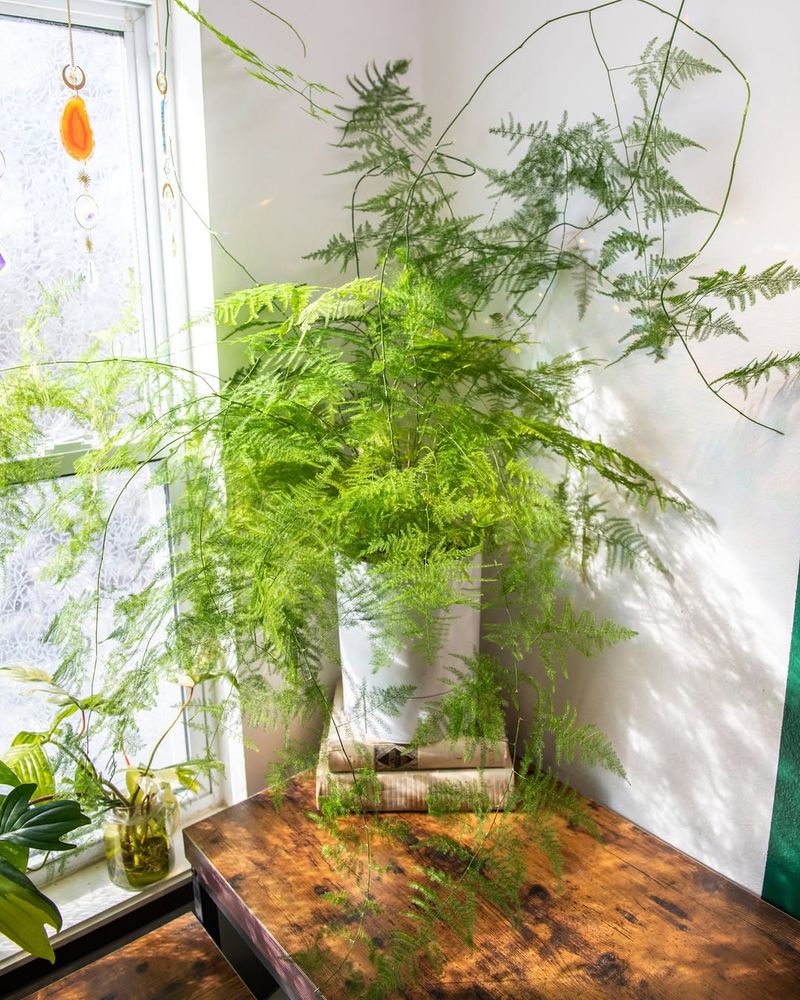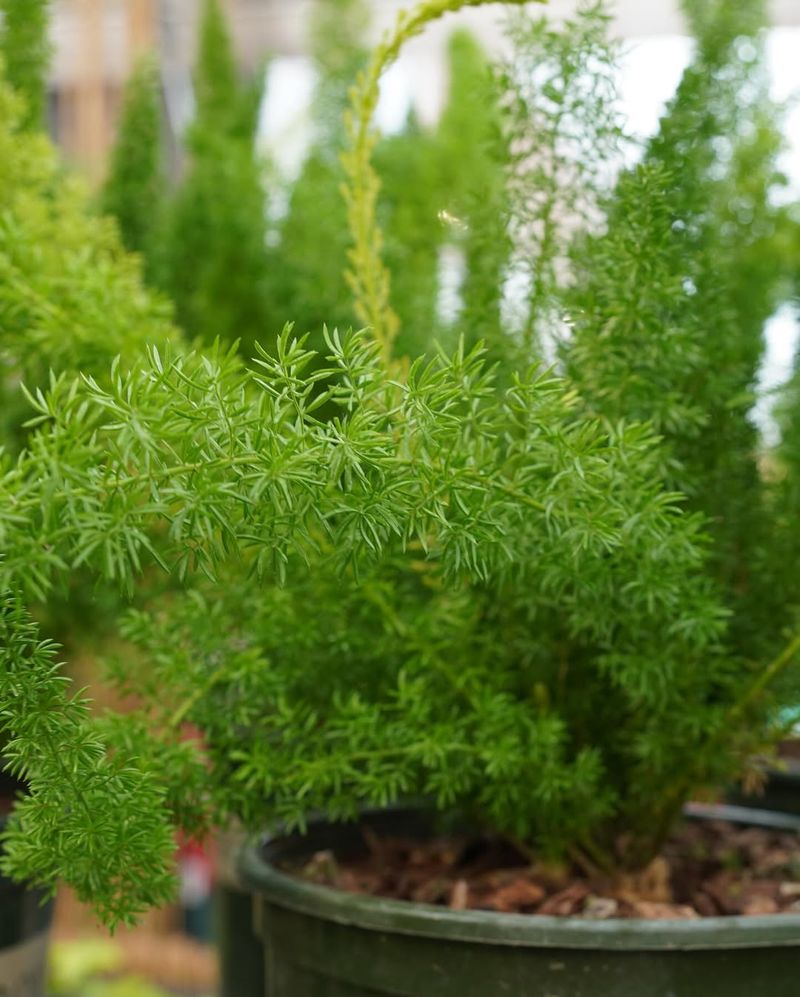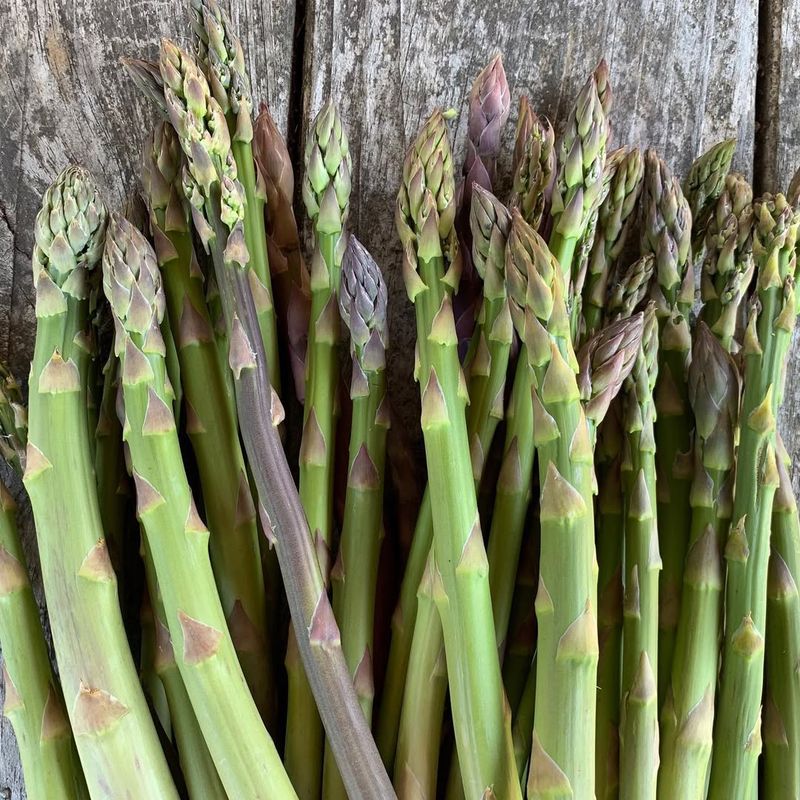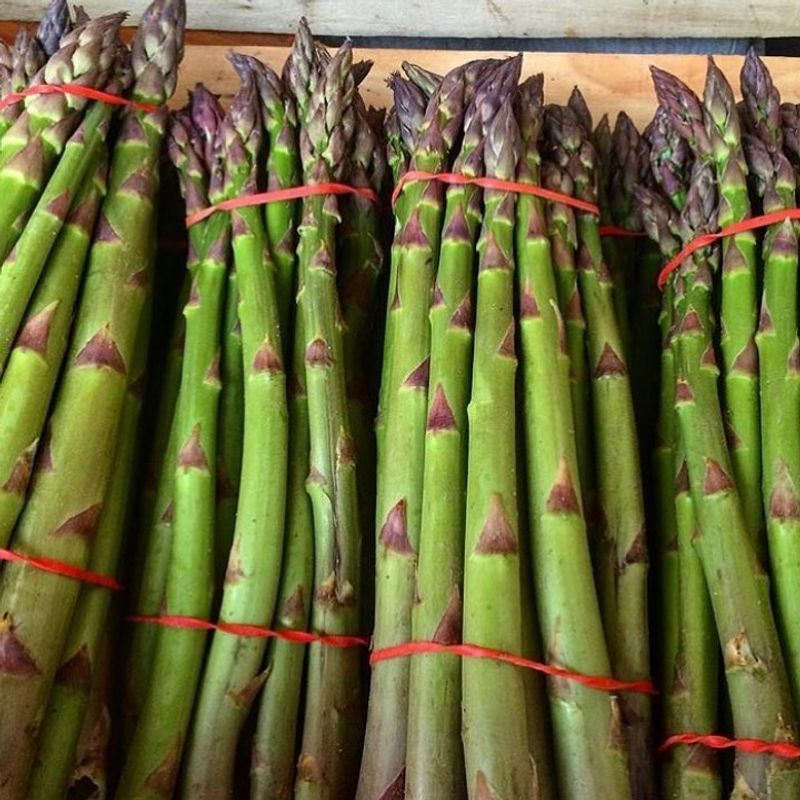Asparagus might be a slow starter, but once it’s established, it’s one of the most rewarding (and low-maintenance) crops you can grow. Starting it indoors gives you a head start on the growing season and a better shot at a strong, healthy harvest—especially if you’re going the organic route.
With the right setup and a little patience, you’ll be on your way to a sustainable asparagus patch that keeps producing for years. These 28 tips will help you get it right from the very first seed tray.
1. Choose the Right Variety
Embarking on an indoor gardening adventure requires picking the perfect variety. Asparagus comes in several types, but not all are suited for indoor growth. Opt for a variety that thrives in contained spaces, such as Jersey Knight or Mary Washington.
These are known for their adaptability to various environments, including the confines of a pot or planter. Selecting the right variety lays the foundation for a successful indoor asparagus garden, ensuring that your plants will flourish with proper care and attention.
2. Gather Necessary Supplies
Starting any project means assembling your tools, and indoor gardening is no different. You’ll need pots, potting mix, a watering can, and gloves. Ensure the pots have good drainage because asparagus roots despise soggy conditions.
A trowel and gardening fork are also handy for planting and maintaining the soil. Having everything ready at the start saves time and prevents those mid-planting runs to the store. Consider using organic supplies for an eco-friendly touch.
3. Select the Perfect Spot
Finding the ideal location is like choosing where to place your favorite chair. Asparagus requires ample sunlight, so pick a spot that receives at least six hours of sun daily. A south-facing window is often the best choice to ensure they receive enough light to photosynthesize effectively.
Inadequate light can lead to weak, spindly plants that struggle to survive. Start with a sunlit area and adjust based on how your plants respond.
4. Prepare the Soil
The foundation of any plant’s success lies in its soil. For asparagus, a mix rich in organic matter, well-draining, and pH-balanced is essential. You can buy a pre-mixed potting soil or create your own by combining peat moss, vermiculite, and compost.
Aim for a pH around 6.5 to 7.5, testing it with a simple kit available from garden centers. Proper soil preparation ensures your asparagus has the nutrients and structure necessary for strong growth.
5. Sow Seeds or Plant Crowns
Deciding whether to sow seeds or plant crowns is like choosing between a shortcut and a scenic route. Seeds require patience, taking up to three years to yield a full harvest, while crowns can produce spears in as little as one year.
If you opt for crowns, plant them in shallow trenches, covering them with about two inches of soil. This method accelerates the growing process, and you’ll enjoy the fruits of your labor sooner.
6. Watering Wisely
Watering is an art that requires balance. Asparagus plants need regular watering, especially during their growing season. However, overwatering can drown roots and cause rot. Allow the top inch of soil to dry out slightly between waterings.
Use room temperature water to avoid shocking the plant, and consider a schedule that fits your lifestyle, making it easy to remember. Consistent care leads to healthy, thriving plants that reward you with fresh produce.
7. Maintain Ideal Temperature
Temperature control is crucial for indoor plants. Asparagus prefers a temperate climate, ideally between 60-75°F (15-24°C). Fluctuations in temperature can stress the plants, affecting their growth and productivity.
Keep them away from drafty windows or heat vents that could disrupt this balance. Consistent temperatures foster a stable environment where asparagus can thrive, ensuring your indoor garden remains lush and productive.
8. Fertilize Regularly
Just like humans need vitamins, plants need nutrients. Feeding asparagus with a balanced liquid fertilizer every 4-6 weeks supports its growth. Choose a fertilizer with a good mix of nitrogen, phosphorus, and potassium.
Avoid over-fertilizing, as it can lead to salt buildup and harm the roots. Regular feeding ensures your asparagus remains vigorous, producing healthy spears ready for your kitchen. Monitor your plants’ response to adjust the feeding schedule as needed.
9. Prune for Health
Pruning might seem daunting, but it’s essential for plant health. Removing dead or yellowing fronds prevents pests and diseases from taking hold. Use sharp, clean shears to make precise cuts and reduce the risk of infections.
Regular pruning encourages new growth and keeps your asparagus looking neat and tidy. It’s a small task with big benefits, contributing to the overall vitality of your indoor garden.
10. Monitor for Pests
Pests are the uninvited guests of indoor gardens. Keep an eye out for aphids, spider mites, and more. Early detection is key to preventing infestations. If you spot any, treat your plants with insecticidal soap or neem oil, both safe options for indoor environments.
Consistent monitoring minimizes damage and keeps your asparagus healthy. Remember, vigilance is your best defense against these tiny invaders.
11. Provide Support
Asparagus can grow tall and may need support. Stakes or small trellises provide the necessary structure to keep them upright. Insert stakes into the soil near the base of the plant and gently tie the stalks with soft garden ties.
This support prevents breakage and encourages vertical growth, maximizing your plant’s potential. Providing proper support is like being a good friend, always there to lend a helping hand.
12. Rotate Plants
Rotation is the key to even growth. Indoor plants tend to lean towards light sources, and asparagus is no exception. By rotating the pots regularly, you ensure all sides receive equal exposure.
This technique prevents uneven growth and helps maintain a balanced, bushy appearance. Set a reminder to turn your plants every few days for symmetrical development. A little spin can make a world of difference in your indoor garden.
13. Control Humidity Levels
Humidity plays an unexpected but vital role in indoor plant care. Asparagus thrives in moderate humidity levels, around 40-50%. Too little can dry out the plant, while too much encourages mold.
Use a hygrometer to monitor humidity and employ a humidifier or dehumidifier as needed to maintain balance. This creates a comfortable environment that supports your plant’s health and productivity, ensuring your indoor garden remains a sanctuary of growth.
14. Repot When Necessary
Repotting is an occasional necessity. Asparagus roots need space to spread, and crowded roots can stunt growth. When you notice the roots circling the pot or protruding from drainage holes, it’s time to upgrade.
Choose a pot that’s slightly larger, providing more room for expansion. Replenish the soil with fresh potting mix during the process. Repotting refreshes your plant’s environment, promoting vigorous growth and longevity.
15. Harvesting the Spears
Harvesting is the moment you’ve been waiting for. Once the spears reach about 6-8 inches tall, they’re ready to be collected. Use a sharp knife to cut them just above the soil line.
Harvesting promotes further growth, ensuring a continuous supply of delicious spears. Remember not to over-harvest, especially in the first year, to allow the plant to establish itself. Enjoy the fruits of your labor in your favorite dishes.
16. Rest the Plants
Like all living things, plants need rest. After harvesting, allow your asparagus to enter a dormant period, reducing water and ceasing fertilizer application. This rest phase is essential for rejuvenation and future productivity.
It’s the plant’s way of recharging, preparing for another fruitful cycle. Providing this downtime ensures your asparagus remains healthy and continues to thrive indoors, ready for the next growing season.
17. Companion Planting
Companions can enhance your asparagus’ growth. Consider planting herbs like parsley or basil nearby, which can deter pests and improve soil health. This symbiotic relationship benefits both plants, creating a mini ecosystem.
Ensure space between them to avoid competition for resources. Companion planting not only aids in pest control but also adds variety to your indoor garden, making it a vibrant and productive space.
18. Use Mulch to Retain Moisture
Mulch is the unsung hero of moisture management. Applying a layer around your asparagus helps retain moisture in the soil, reducing the need for frequent watering. It also suppresses weeds and regulates soil temperature.
Choose organic mulch like straw or wood chips for best results. This simple addition can make a significant difference in your plant’s health, ensuring your asparagus remains hydrated and happy.
19. Ensure Proper Drainage
Drainage is crucial in preventing root rot. Ensure your pots have adequate holes at the bottom to allow excess water to escape. Consider placing small stones or broken pot shards at the bottom before adding soil.
This creates a barrier that promotes proper drainage. Good drainage is a key component of healthy indoor gardening, preventing waterlogged soil and ensuring your asparagus roots stay dry and disease-free.
20. Adjust for Seasonal Changes
Seasons affect indoor plants just as they do outdoor ones. During winter, reduced light levels might require the use of grow lights to supplement sunlight. Conversely, summer may demand more vigilant watering due to increased evaporation.
Be attuned to these changes and adjust your care routine accordingly. This adaptability ensures your asparagus continues to thrive throughout the year, regardless of external conditions.
21. Prevent Disease
Prevention is better than cure, especially with plant diseases. Keep your indoor garden clean by removing any debris and ensuring good air circulation. Watch for signs of fungal infections and treat them promptly with fungicides safe for indoor use.
Regularly inspecting your plants helps catch issues early, keeping your asparagus healthy. A proactive approach to plant care safeguards against disease, ensuring your garden remains a flourishing haven.
22. Provide Adequate Lighting
Light is food for plants. If natural sunlight isn’t sufficient, consider investing in grow lights. LED or fluorescent lights are efficient options that mimic the sun’s spectrum, promoting robust growth.
Position them about six inches above the plants and adjust as needed to prevent burning. Adequate lighting is crucial for photosynthesis, ensuring your asparagus develops strong and healthy spears, ready for harvest.
23. Practice Patience
Gardening is a lesson in patience. Asparagus, especially when grown from seeds, takes time to mature. Resist the urge to rush, and allow nature to take its course. Each phase of growth is a step towards a bountiful harvest.
Observing your plants’ progress can be a meditative experience, offering rewards in the form of fresh produce. Practice patience, and you’ll find the journey as enjoyable as the destination.
24. Regularly Clean Leaves
Dust can accumulate on indoor plants, blocking light and hindering growth. Regularly cleaning your asparagus fronds with a damp cloth keeps them healthy. This simple task allows leaves to breathe and photosynthesize efficiently.
It’s like giving your plants a spa day, ensuring they remain vibrant and productive. Include leaf cleaning in your routine for a thriving indoor garden and happy plants.
25. Avoid Overcrowding
Space is a luxury in indoor gardening. Overcrowding can lead to competition for resources, stunting growth. Keep your asparagus well-spaced to ensure each plant has access to enough light and nutrients.
This attention to spacing promotes healthy development and reduces stress. Avoiding overcrowding is a simple yet effective way to maintain a productive and harmonious indoor garden environment.
26. Track Growth Progress
Tracking growth is like keeping a journal of your plant’s journey. Note changes in height, foliage, and any issues that arise. This record-keeping provides valuable insights into your plant’s health and responses to care.
It also helps track when to expect harvests or when adjustments in care are needed. Engaging with your garden in this way can enhance your gardening skills, leading to more successful cultivation.
27. Enjoy Your Harvest
There’s nothing quite like the satisfaction of enjoying what you’ve grown. Once harvested, asparagus spears can be steamed, grilled, or even eaten raw. Share your bounty with friends and family or savor the freshness yourself.
This final step in the growing process celebrates your dedication and skill as an indoor gardener. Enjoying your harvest is the delicious culmination of your efforts, bringing the garden to your table.
28. Plan for Next Season
Gardening is a cycle, and planning ensures continued success. Reflect on what worked and what didn’t, making notes for future improvements. Consider trying new varieties or techniques to enhance your indoor garden.
Planning keeps you engaged and excited for future growing seasons, bringing new challenges and rewards. This foresight is the hallmark of a dedicated gardener, ensuring your asparagus thrives year after year.

